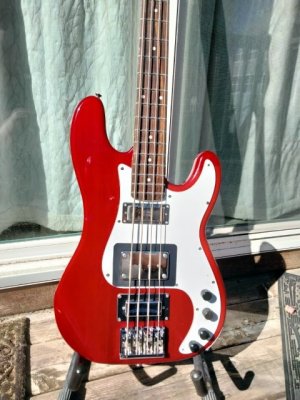The pictures didn't come out good. Here's what it looks like from a diagram perspective. The two helper magnets are aligned magnetically with the outside magnets but surround the poles like a P90.
I think the weaknesses of the Mudbucker design are that the stock magnets on the outside of the coils is the wrong place in relation to the poles. Also if there aren't magnets in the center close to the poles the magnetic coverage is poor. Lastly the magnetic field is strong in the middle but on the outer strings are weak so adding mass under E and G helps.
Nice. I was also trying to compensate for the perceived low output due to (basically) the lack of adjustability. A lot of these aftermarket muddies have only the top mags and some are alnico so I decided to spread the field my way and put 4 ceramics on both. They’re loud as hell, now.

